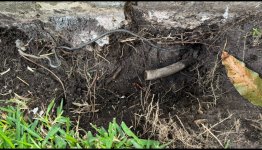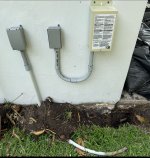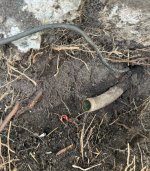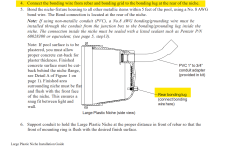Hello. I have an older pool and the light went bad as well as the existing 100w transformer (pool light is 12v). As I was removing all the old stuff, I noticed that the red brass 3/4” pipe coming from under the deck had broken. I have about 6” before it goes under concrete. I installed a new pentair 100w transformer and is suitable for direct connection to pool light wet nitch. My question is, how can I properly convert the brass pipe to pvc to finish the short run to the transformer box. I understand that this needs to be a watertight connection since it gets filled with water.
Also, alongside the brass pipe is a #8 copper insulated wire that was terminated into the old j-box. Should this be connected to the new metal j-box ground point inside the pentaire transformer?, is it obsolete since this is a 12v? or should it actually be connected to the bonding lug (which is connected to other equipotential grid).
Also, alongside the brass pipe is a #8 copper insulated wire that was terminated into the old j-box. Should this be connected to the new metal j-box ground point inside the pentaire transformer?, is it obsolete since this is a 12v? or should it actually be connected to the bonding lug (which is connected to other equipotential grid).





